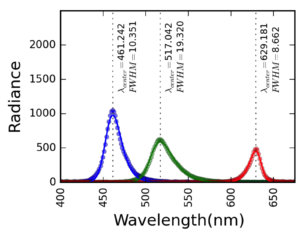Optimal Lighting for Plants in Space
Efficiency is the name of the game- high energy blue and red LED lights are typically used to grow plants in space.
As you might know, plants are photosynthetic organisms that require light to harvest energy. Lighting has a big impact on plant growth: plants grow towards light (phototropism) and also take lighting cues to regulate certain processes (photoperiodism). The color of the light that a plant gets matters as well. Let’s take a look.
Plants and Different Light Colors

We’ll start by asking this question: why are plants green? Objects have a certain color because they are reflecting that color away. Plants reflect a lot of green light away, and consequently, they absorb that light poorly. Green light is the most inefficient light source for plants. High energy, short wavelength colors such as blue and red are the most efficient sources of light for plants. Blue light promotes leaf growth and red light combined with blue light promotes flowering.
Efficiency is the Name of the Game in Space
Take a look at the VEGGIE plant growth system aboard the International Space Station. What color light do you see?
If you said purple, you’re right. And purple is … you guessed it: a combination of red and blue light, the two most efficient colors for plant growth. Making sure all spaceflight equipment is running at optimal efficiency is important. To give plants the best treatment we can, our current spaceflight growth systems run under a combination of red and blue light: purple light.

